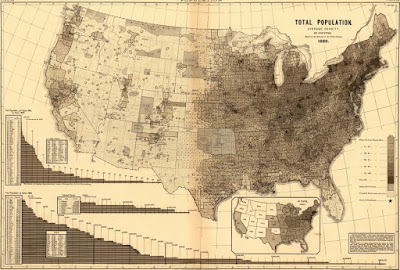 |
| Excerpt from page 383 of The History of Medina County and Ohio(1881) talking about early settlers of Medina Township. |
"...Augustus Philips settled on the south half of same lot. Philips' father and mother came in 1820. They were colored (sic) people, and are said to have been descendants of the noted Indian Chief -- King Philip."
Years ago, when I first read those words, they struck me as the germ of a legend or folk tale. Probably no basis in fact. Curious, I did a little research and found Augustus listed in the 1850 Census for Medina County. The column for his race is left blank as it often was at that time. Knowing nothing about King Philip, I researched him enough to know that he caused trouble for the British in the 1600's and after finally being shot, his descendants were "sold into slavery." So that was enough information to say that the tale was possible, but not provable without doing extensive research on the Philips family.
So when a member called wanting to find the obituaries for Philip Phillips and his wife Elizabeth because they had heard that their daughter-in-law was a mulatto, I remembered the few lines I had read all those years ago.
Philip had died June 15, 1838 and Elizabeth died February 27, 1851, so I knew that obituaries for either of them was highly unlikely. But doing due diligence, I checked the Medina Library's Online Obituary Index, the Ohio Obituary Index and NewspaperArchive database. No obituaries were found.
I tracked down the lines from The History of Medina County and Ohio (1881) that are reproduced above. When the member was called with the results, she shared more information - Sarah PEEK/PEAK was the PHILLIP's daughter-in-law, and she was married to Jeruel PHILLIPS.
Now I was on a roll. First to revisit the information on King Philip.
 |
| King Philip - illustration from Pictorial History of King Philip's War by Daniel Strock. |
King Philip was born as Metacomet in 1638. He and his brother, Wamsutta, known as King Alexander, took extraordinary step of formally adopting English names, during a time of peace with the English. The designation "King" was a term the English used to address the leader of the tribe. Alexander and Philip were members of the Wampanoag tribe in the area of Massachusetts and Rhode Island. So while they were leaders in their community, they were not royalty in the traditional sense.
Their father, Massasoit made many concessions to the English and his sons followed his lead. But after years of encroachment into their lands, the tribe started pushing back at the English. Starting in the 1660's clashes occurred culminating in King Philip's war, which transpired 1675-76. Whenever the English captured any of the Native Americans, people who weren't killed would be sold into slavery. In August of 1676, King Philip's wife and his one son were captured and sold into slavery in Bermuda. On the 12th of August, Philip was shot and killed. That was an end to the hostilities.
Other sources make the point that no one knows for sure how many children King Philip had, so it still makes it a possibility that some of his descendants survived and were also sold into slavery. They would have intermingled with the African slaves and produced children. Nothing more is known for certain.
Besides the intriguing entry into the 1881 History, the Medina Phillips family can be traced in other records.
As I mentioned earlier, Augustus Philips is located in the 1850 Medina County Census and he was born in Connecticut. By the 1860's the family had moved on to Michigan. Ten pages further in on the 1850 Census, Jeruel Philips is found with his wife, Sarah, and their 10 children. Jeruel was born in Connecticut and everyone else was born in Ohio. They are all listed as mulattoes.* Next door to Jeruel and his family is Elizabeth Phillips, aged 89, born in Connecticut and the column for her race is blank. On the other side of Elizabeth is Sophie Philips and her two daughters. They were all born in Ohio and are listed as mulatto.
Working back in time, the 1840 Census shows that Augustus is the only one in Medina County. There are 7 people listed in the columns for "Free Colored Persons." Jeruel and Elizabeth Phillips are in Lorain County, where family lore says that Phillip and Elizabeth are both buried. But no tombstones exist to confirm this. Again, all eight individuals are in the "Free Colored Persons" columns.
 |
| 1840 Census for Medina Township, Medina County, Ohio, showing the Augustus PHILLIPS family. All are listed under the "Free Colored Persons" |
 |
| The 1840 Census for Grafton Township, Lorain, Ohio, showing Jeruel PHILLIPS and in a separate household, Elizabeth PHILLIPS |
In the 1830 Census, Philip, Jeruel and Augustus are all listed in Medina County and the 10 people listed are in the "Freed Colored Persons' columns.
In the 1820 Census, only Philip is listed in Medina County, Augustus, born 1796 and Jeruel, born 1803 are probably enumerated with their father, again in the "Free Colored Persons" columns
The 1800 and 1810 Census for Ohio has been lost. But from the history, we know that Philip moved to Medina around 1820.
Philip is listed in the 1790, 1800 and 1810 Census records for Litchfield County, Connecticut. His birthplace. In each of the enumerations, he and his family members fall into the column "All Other Free Persons". The other columns available to the census takers were "Free White Males", "Free While Females", and Slaves.
So as far back as 1790, Philip Phillips was recognized as not being white. As Native Americans were not listed as a separate race in the census until 1860, any Native Americans would have been considered "non-white".
But there is more information. The member who had asked about the Phillips family had shared that it was thought that Philip Phillips had served in the Revolutionary War.
Another avenue to pursue!!
First, a quick check of Marcia & Terry Hart's book Veterans Buried in Medina County, Volume I Revolutionary War.
On page 78, this entry reads:
Phillips, Philip
Born 22 Dec 1762 in Windham, Connecticut, he lived in Medina County in 1835 according to the 1835 Pension Roll. His widow Elizabeth applied for a widow's pension in 1839 (W 5532) in which she indicated that he had died 15 Jun 1838. He could not be found in Medina County. Email contact with the descendants reveals that they believe he is buried in Grafton, Lorain County, but do not know of an exact cemetery.
That seems to confirm that Philip served in the Revolutionary War. Heritage Quest has Revolutionary War Pension Records. Next step...
The file is 69 pages long! Among those many pages are two pages that were torn out of the family Bible. Jeruel Phillips attests to the fact that he saw Philip write in the Bible after its purchase in 1811. The pages are the birth and marriage records for the family.
 |
| 1811 PHILLIPS Family Bible Births Register |
- Philip Phillips Born December 22 1762
- Elizabeth Phillips Born August 29: 1764
- James Phillips Born February 11 1790
- Augustus Phillips Born March 28: 1791
- Benjamin Phillips Born September 29: 1792
- Huldah E Phillips Born April 24: 1795
- John Phillips Born January 4: 1800
- Jeruel Phillips Born April 5:1804
INCREDIBLE! A reliable document that gives the birth dates for people born in the 18th and early 19th centuries! And it confirms that Jeruel and Augustus are brothers and are the children of Philip and Elizabeth!
The page for the Marriage Register is not as complete:
 |
| 1811 PHILLIPS Family Bible Marriage Register |
The only complete dates for marriages are for Philips & Elizabeth's marriage and then their daughter, Huldah:
- Philip Phillips married March 4:1789
- Huldah Phillips married November 8:1815
- John Phillips married November 18
- Augustus Phillips married February
- Jeruel Phillips married
In his affidavit, Jeruel explains that some of the entries had been entered incorrectly and then were erased. In a separate affidavit, a Martha Phillips testifies that Philip and Elizabeth were married at her home and she verifies the year, but does not remember the exact date.
The Medina County District Library has just subscribed to the American Ancestors Database, which is produced by the New England Historic Genealogical Society and concentrates on New England families. Checking for Philip in that resource, nothing was found on him. But Elizabeth did turn up in New Milford birth records. It shows that Elizabeth is the daughter of Benjamin & Mary Phillips and was born 29 August 1764. These additional children are attributed to Benjamin & Mary:
- Hulda b. Aug. 4 1756
- Jaruel b. Aug. 31 1758
- Mary b. July 14, 1762
- Onla b. Jan. 15 1766
- Reuben b. May 8, 1755
- Shubel b. Dec. 10, 1760
So Philip was born in 1762, almost a century after King Philip was killed. Again, tracing the family back another 5 generations at this time period and involving either Native American or African peoples is nearly impossible.
Family history and county and town histories have been checked, with no luck. In 1878, one of Massasoit's descendants, Zerviah G. Mitchell, wrote a book about her family called Indian History Biography & Genealogy Pertaining to the Good Sachem Massasoit. However her line descends from one of Massasoit's daughters and contains no additional information on King Philip or his brother, King Alexander.
IF local resources in Litchfield County, Connecticut were consulted we might find additional information.
So, we are back to my original conclusion. It is possible that the Medina PHILLIPS family are descended from King Philip. But not provable without extensive additional research...
*Mulatto is an archaic and offensive term that means a person of mixed ancestry, usually meaning white and African American ancestry.
SOURCES:
- US Census Bureau https://www.census.gov/history/pdf/c2010br-10.pdf
- 1850 Census, Medina Township, Medina County, Ohio, Ancestry Library Edition
- 1840 Census, Medina Township, Medina County, Ohio, Ancestry Library Edition
- 1840 Census, Grafton Township, Medina County, Ohio, Ancestry Library Edition
- 1830 Census, Medina Township, Medina County, Ohio, Ancestry Library Edition
- 1820 Census, Medina Township, Medina County, Ohio, Ancestry Library Edition
- 1810 Census New Milford, Litchfield County, Connecticut, Ancestry Library Edition
- 1800 Census New Milford, Litchfield County, Connecticut, Ancestry Library Edition
- 1790 Census New Milford, Litchfield County, Connecticut, Ancestry Library Edition
- Connecticut: Vital Records (The Barbour Collection), 1630-1870, American Ancestors.org, New England Historic Genealogical Society, 2011.
- Hart, Marcia, Hart, Nelson(Terry), Veterans Buried in Medina County, Volume I Revolutionary War, 2009.
- History of Medina County and Ohio Baskin & Battey, 1881, p. 381.
- "King Philip's War", History, https://www.history.com/topics/native-american-history/king-philips-war
- "Metacomet" Wikipedia, https://en.wikipedia.org/wiki/Metacomet.
- Strock, Daniel, Pictorial History of King Philip's War, 1851.































